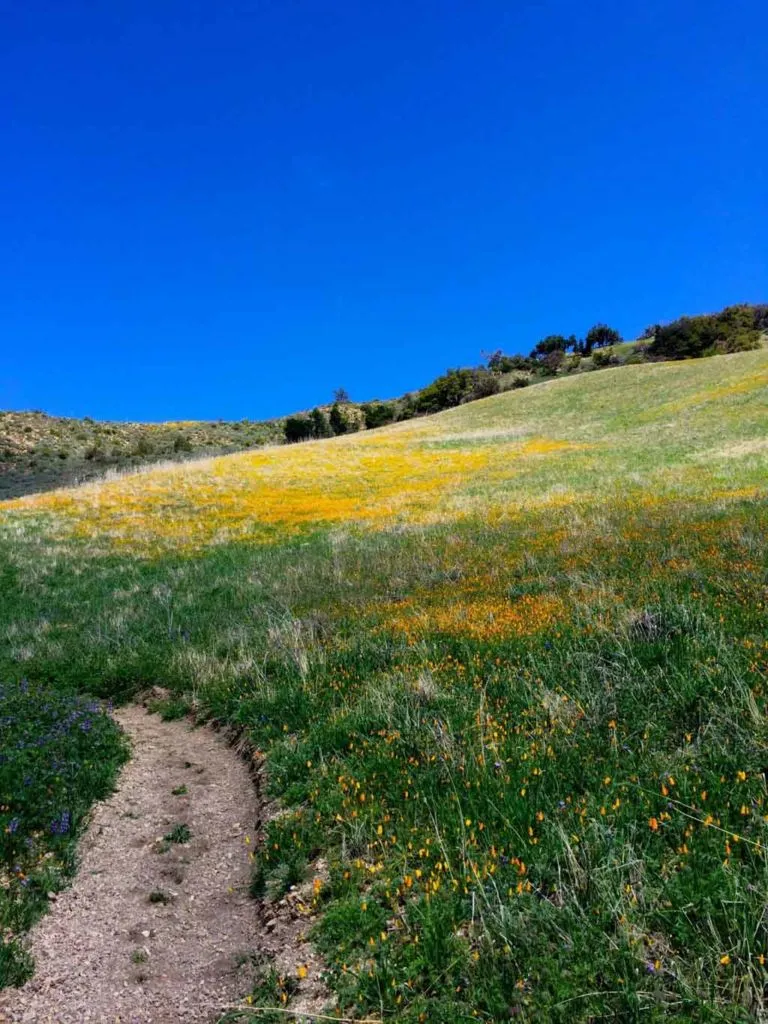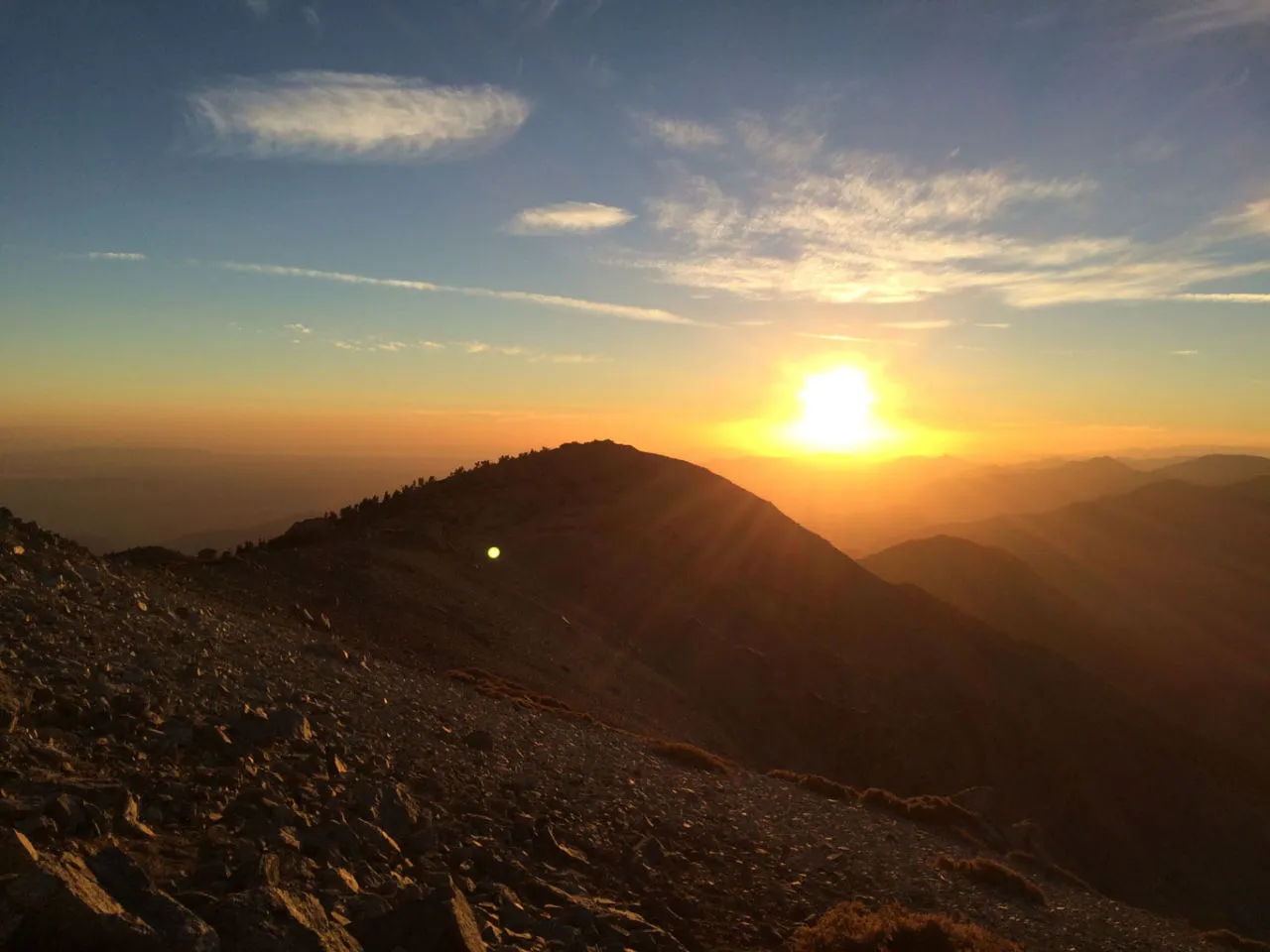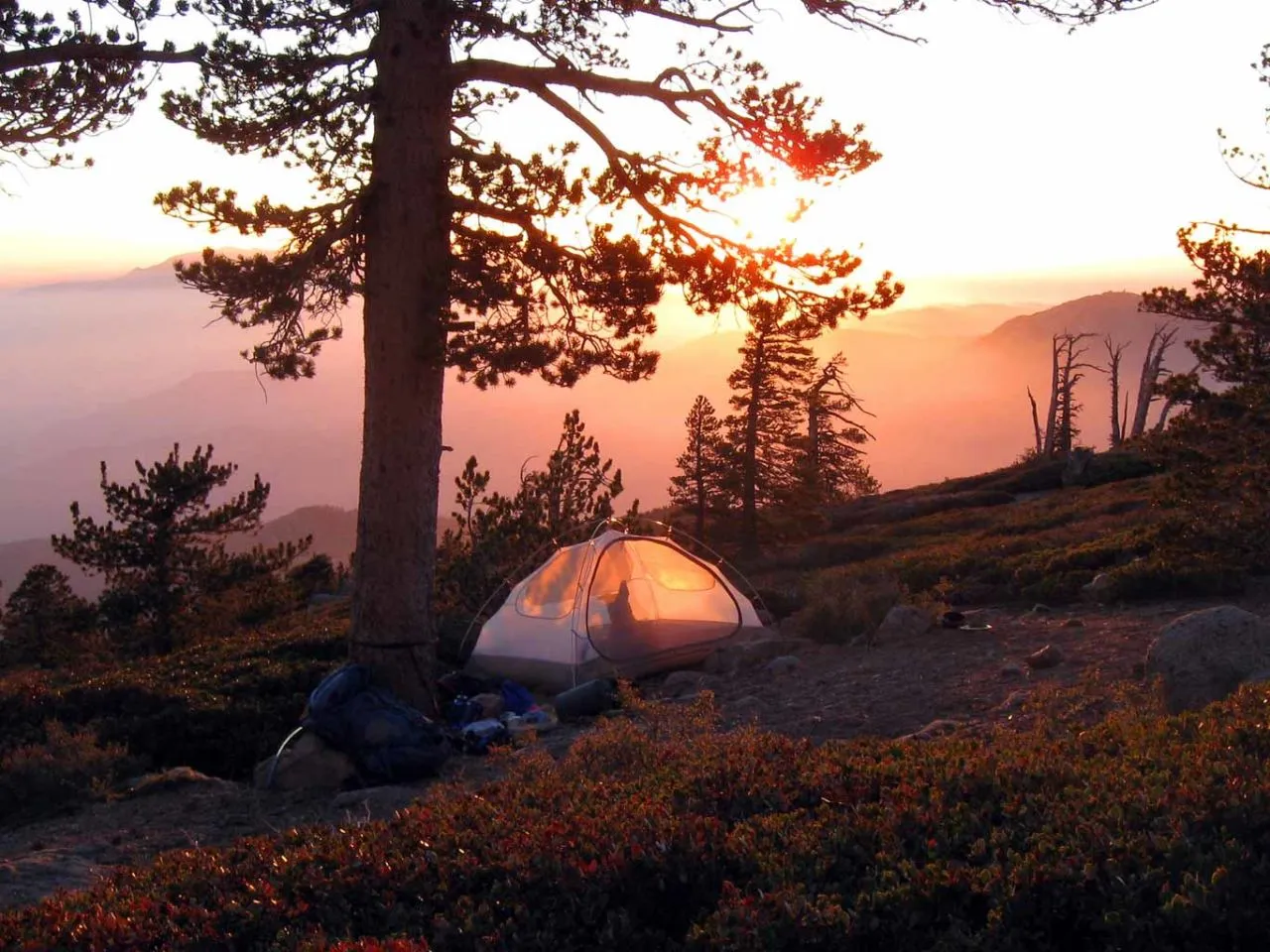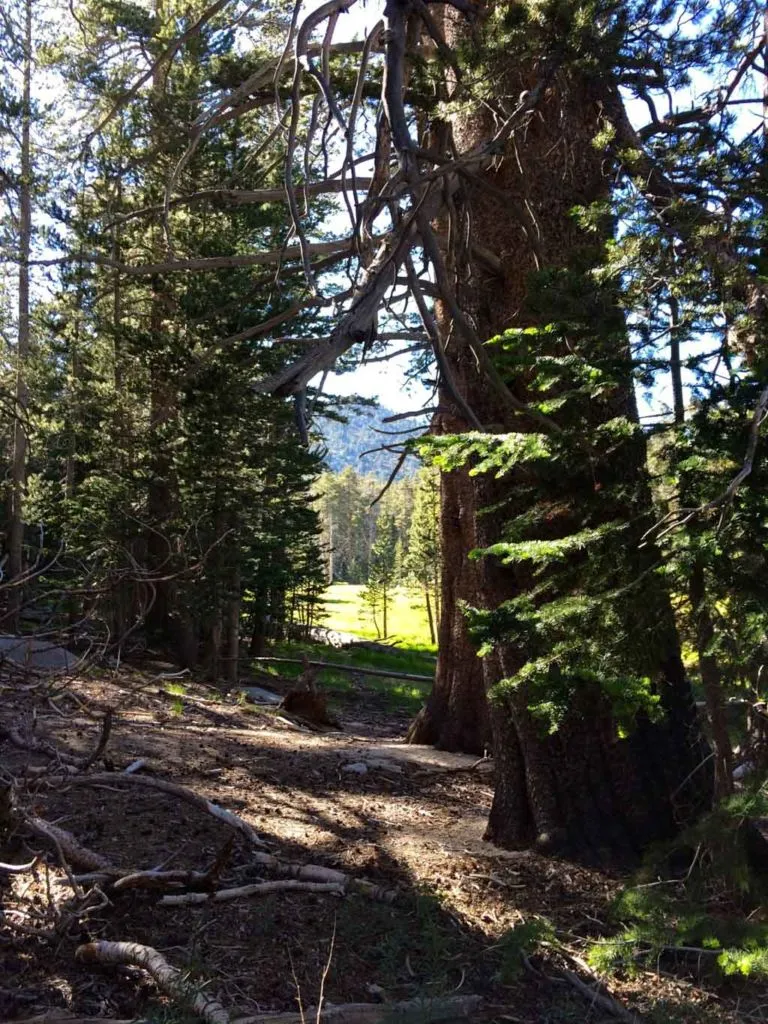Southern California is famous for its sun-drenched beaches and bustling urban centers, particularly the vibrant expanse of Los Angeles. Yet, just a short drive from the city lights lies a surprising wealth of wilderness waiting to be explored. While countless day hikes offer a quick escape, experiencing the profound peace of spending a night under the stars requires venturing into the backcountry. Many aspiring backpackers in the Los Angeles area simply don’t know where to begin their overnight adventures.
As a content creator deeply invested in connecting people with the world through immersive experiences, I believe backpacking offers a unique blend of challenge, solitude, and natural beauty right on LA’s doorstep. It’s an opportunity to press pause on the city’s rhythm and connect with the ancient landscapes of the San Gabriel, San Bernardino, and San Jacinto mountains, or even a nearby island.
I’ve compiled a list of ten fantastic overnight backpacking trips perfect for dipping your toes into the wilderness or finding a quick nature fix near Los Angeles. These trips offer diverse terrains, from coastal canyons to alpine peaks, providing a genuine taste of adventure accessible to anyone willing to carry their home on their back for a night.
Why Backpacking Los Angeles Offers a Unique Escape
Backpacking near Los Angeles provides a fascinating contrast. One moment you’re navigating freeway traffic, and the next, you’re hiking a quiet trail, surrounded by chaparral or towering pines. This proximity means you can often leave after work on a Friday and be back by Saturday afternoon, having experienced a complete change of pace and scenery. It’s an unparalleled way to disconnect and recharge without requiring extensive travel time, making backpacking Los Angeles incredibly appealing for busy city dwellers.
It’s not just about the convenience; it’s about the experience. The shift from urban soundscapes to the natural quiet, the chance to see constellations unobscured by light pollution, and the simple act of cooking a meal outdoors create lasting memories. These trips aren’t just physical challenges; they’re opportunities to gain perspective, build self-reliance, and appreciate the natural heritage preserved within reach of one of the world’s largest metropolitan areas.
Planning Your First Backpacking Trip Near Los Angeles
Embarking on a backpacking trip, even a short overnight one, requires careful planning, especially when backpacking Los Angeles and surrounding areas. Unlike day hiking, you’re responsible for carrying everything you need to survive comfortably: shelter, food, water, and essentials. Understanding permit requirements is crucial – many popular trails in Southern California’s national forests and state parks require wilderness permits, often obtained in advance.
Weather in Southern California mountains can change rapidly. Even near LA, summer can bring extreme heat, while winter requires preparedness for snow and ice, particularly at higher elevations. Always check current conditions and forecasts before heading out. Basic navigation skills, knowing Leave No Trace principles, and having a plan for water sources (or packing enough) are fundamental safety considerations for backpacking Los Angeles’ diverse landscapes.
1. Crystal Cove State Park: Coastal Views & Beginner Friendly
Located down the coast in Orange County, Crystal Cove State Park offers stunning ocean views and surprisingly accessible backcountry camping. While daytime trails are popular with hikers and mountain bikers, the overnight crowds thin considerably. You can hike just a few miles inland to one of the designated camps, set up, and enjoy a spectacular sunset over the Pacific.
This park is fantastic for what many call a “gear shakedown.” It’s a low-risk environment to test new equipment, break in boots, or practice setting up your tent for the first time while still feeling like you’re getting away. It’s one of the easiest ways to experience backpacking Los Angeles’ coastal proximity.
2. Santa Cruz Trail: A Strenuous Inland Challenge
 Spring wildflowers in the Santa Barbara backcountry
Spring wildflowers in the Santa Barbara backcountry
Where to Go After Las Vegas? Top Road Trips & Destinations
Venturing further north into the Santa Barbara backcountry, the Santa Cruz Trail offers a more demanding out-and-back trip. This hike involves roughly 10 miles each way with a significant 2,500 feet of elevation gain. It’s best tackled in the spring to avoid intense summer heat, where you’ll likely find streams flowing near the designated camping areas under the shade of ancient oaks.
The distance and elevation profile here are a good simulation for a typical day on longer thru-hikes like the John Muir Trail, offering a valuable test of your endurance and pack weight. Time your visit right, and you’ll be rewarded not only with a solid workout but potentially a vibrant display of spring wildflowers, adding a splash of natural beauty to your backpacking Los Angeles area adventure.
3. Barker Valley in the Palomar Mountains: Riverside Escape
Located in northeast San Diego County, Barker Valley offers a unique “upside-down” hike. You descend about 1,000 feet to reach the river and camping area, meaning your hike out the next day is entirely uphill. At 6.5 miles round trip, it’s a relatively short distance, making the uphill return manageable for those newer to carrying a pack.
The destination makes the effort worthwhile: a scenic valley with meadows, a flowing river, and even a waterfall. It’s a tranquil spot perfect for relaxing by the water after your hike in. Plus, for those wanting to bring their furry friends, this trail is known for being dog-friendly, adding another layer of enjoyment to your backpacking Los Angeles alternative experience.
4. Santa Anita Canyon: Historic LA Hiking
A view rising out of the Santa Anita Canyon valley, showcasing the terrain accessible when backpacking Los Angeles adjacent areas.
Santa Anita Canyon, located in the San Gabriel Mountains within easy reach of Pasadena and Los Angeles, offers a rich hiking history and several overnight options. You can camp at designated sites like Hogee’s on Winter Creek or Spruce Grove on the Gabrieleño Trail. These campgrounds date back a century, remnants of a time when these canyons were a popular mountain resort area.
The lush, shaded canyons feel surprisingly remote, a world away from the urban sprawl just below. For those seeking a greater challenge, these camps serve as potential base camps for an ambitious morning summit bid on Mount Wilson, one of the peaks in the popular Six-Pack of Peaks challenge. Exploring these trails offers a sense of connection to LA’s hiking past while enjoying a peaceful overnight stay, making it a culturally resonant backpacking Los Angeles experience.
5. Cucamonga Peak: Summit Views & City Lights
Climbing Cucamonga Peak for an overnight stay is a rewarding challenge, particularly for the views it offers. Located in the San Gabriel Mountains, the hike via Icehouse Canyon Trail is strenuous, requiring you to carry all your water – for an overnight trip, this often means packing six liters or more per person. However, the effort is amply rewarded at the summit.
Setting up camp near the summit allows you to witness a spectacular sunset painting the sky, followed by a dazzling display of city lights twinkling below as darkness falls. The sunrise is equally breathtaking. On clear nights, you can see countless stars, and if timed right, even catch a glimpse of the Disneyland fireworks in the distance. It’s a truly magical overnight experience for those backpacking Los Angeles peaks, and it’s also dog-friendly.
6. Mount Baldy: Exposed Alpine Challenge
 Full Moon hike up Mt Baldy
Full Moon hike up Mt Baldy
Camping near the summit of Mount Baldy (officially Mount San Antonio), one of the most prominent peaks near Los Angeles, is an intense experience. It requires packing in all your water due to the lack of reliable sources near the top. The summit area is notoriously cold, windy, and exposed, demanding proper gear and preparation even in warmer months.
Despite the harsh conditions, the views from Mount Baldy at sunrise and sunset are absolutely phenomenal, offering panoramic vistas stretching across Southern California. It’s a challenging but incredibly rewarding overnight trip for experienced backpackers looking for an alpine feel close to the city. Like Cucamonga, it’s also a dog-friendly destination.
7. San Bernardino Peak: Vista from Limber Pine Flat
 Photo: Mitch Barrie
Photo: Mitch Barrie
A stunning view near San Bernardino Peak, showcasing the incredible payoff for backpacking Los Angeles’ eastern mountain ranges.
The San Bernardino Trail ascends towards San Bernardino Peak in the San Bernardino Mountains. While the trail continues beyond, a fantastic overnight option is Limber Pine Flat. This designated camp provides a scenic stopping point partway up the mountain, offering a challenging climb to reach it but promising significant rewards.
The primary reason to backpack to Limber Pine Flat is the breathtaking views it affords. Looking out from the camp, you get expansive vistas of the surrounding mountain ranges and valleys, offering a true sense of elevation and escape from the urban environment far below. It’s a perfect goal for a challenging overnight trip focused on incredible scenery while backpacking Los Angeles adjacent wilderness areas.
8. Catalina Island: An Island Adventure
Overnight camp setup at Parsons Landing on Catalina Island, a unique coastal option for backpacking near Los Angeles.
Backpacking on Catalina Island offers a completely different coastal experience compared to mainland Southern California. You don’t need to commit to the entire strenuous Trans-Catalina Trail to enjoy an overnight stay. Taking a ferry from San Pedro (easily accessible from Los Angeles) to Two Harbors gives you several options for shorter day hikes to beautiful backcountry campsites.
From Two Harbors, you can hike to Parsons Landing on the north side or Little Harbor on the south side. Each camp is situated on a different side of the island with its own distinct atmosphere – Parsons Landing is more remote, while Little Harbor feels slightly more sheltered. Camping on Catalina is an iconic Southern California experience that every local backpacker should try at least once, offering unique wildlife (like the Catalina Island Fox) and stunning ocean views.
9. San Gorgonio: Summit Views & High Camps
Capturing the stunning sunset from a campsite at High Creek while backpacking San Gorgonio, Southern California’s highest peak near Los Angeles.
Mount San Gorgonio, standing as the highest peak in Southern California, is a popular objective, often attempted as a single strenuous day hike. However, many hikers miss out on the truly spectacular views and experience by rushing up and down. Spending the night allows you to immerse yourself in the mountain environment and witness the changing light of sunset and sunrise from high elevation.
Options for overnight camps include High Creek, known for its dramatic views, or Halfway Camp, which, as its name suggests, is roughly halfway to the summit from the Vivian Creek trailhead. Camping on San Gorgonio is a challenging endeavor, requiring careful planning for altitude and weather, but the reward of being high on the mountain overnight is immense. It’s the tallest peak near Los Angeles, and making the journey last by backpacking is an unforgettable achievement.
10. San Jacinto: Alpine Escape via Tram or Trail
 First Look at Round Valley
First Look at Round Valley
Mount San Jacinto holds a special place in my heart. I’ve been backpacking on this incredible mountain, accessible from the Palm Springs area near Los Angeles, since my teenage years, and its beauty never fades. What makes San Jacinto particularly appealing are the various access points and options. You can embark on a strenuous hike from trailheads near Idyllwild or take the quick, scenic route via the Palm Springs Aerial Tramway.
The tram dramatically reduces the elevation gain required to reach the sub-alpine and alpine zones, making overnight trips here more accessible for those with less time or preferring less climbing. The landscape of San Jacinto, with its beautiful meadows, pine forests, and granite peaks, strongly reminds me of the Sierra Nevada mountains. There are numerous camping areas, and you can choose to aim for the summit or simply explore areas like Wellman’s Divide. Backpacking San Jacinto, whether via the tram or a trail, offers a true alpine escape within a reasonable distance for anyone in the Los Angeles region.
Essential Tips for Backpacking Los Angeles Trails
Successfully enjoying your backpacking trip near Los Angeles involves more than just choosing a destination. Always obtain required wilderness permits well in advance, as popular areas book up, especially on weekends. Educate yourself on Leave No Trace principles to minimize your impact and preserve these beautiful natural spaces for others. This includes proper waste disposal (packing out everything, including toilet paper), staying on trails, and minimizing campfire impacts (check fire restrictions!).
Water management is critical; know where potential water sources are and how to filter or treat water safely. Packing layers is essential, as temperatures can fluctuate dramatically between day and night, and at different elevations, even when backpacking Los Angeles’ mild climate. Finally, inform someone of your hiking plan – your route, expected return time, and who to contact if you don’t check in.
Frequently Asked Questions About Backpacking Los Angeles
- Are permits required for backpacking trips near Los Angeles?
Yes, most overnight backpacking trips in the national forests and state parks surrounding Los Angeles require a wilderness permit. It is crucial to check the specific requirements for your chosen destination and obtain permits well in advance, as quotas may be in place. - Are these trips suitable for beginner backpackers?
Some trips like Crystal Cove State Park or short loops within Santa Anita Canyon are excellent for beginners. Others like Mount Baldy or San Gorgonio are more strenuous and better suited for those with some hiking and backpacking experience. Always research the specific trail’s difficulty, distance, and elevation gain before choosing. - What is the best time of year for backpacking near Los Angeles?
Spring and Fall generally offer the most pleasant weather for backpacking Los Angeles area mountains – temperatures are moderate, and wildflowers bloom in spring. Summer can be very hot, especially at lower elevations, while winter may bring snow and ice to higher peaks, requiring specialized gear and skills. Coastal areas like Catalina Island and Crystal Cove are often pleasant year-round. - What essential gear do I need for backpacking Los Angeles?
Key gear includes a backpack, tent, sleeping bag, sleeping pad, portable stove and fuel, food, water filter or treatment, appropriate hiking clothing and layers, navigation tools (map, compass, GPS), headlamp, first-aid kit, and sun protection. Always check a gear list and tailor it to the specific trip’s conditions. - Are dogs allowed on these backpacking trails?
Dog policies vary greatly by location. Some areas like Barker Valley, Cucamonga Peak, and Mount Baldy trails are dog-friendly, usually requiring dogs to be on a leash. Other areas, particularly state parks (like Crystal Cove) or sensitive wilderness areas, may prohibit dogs. Always verify the specific trail or park regulations before bringing your dog.
Wrapping Up Your LA Backpacking Journey
These ten trips offer just a glimpse into the incredible opportunities for backpacking Los Angeles and its surrounding wild spaces. Each provides a unique challenge and a distinct connection to the diverse landscapes of Southern California. From the scent of coastal sagebrush to the crisp air of high alpine peaks, these overnighters provide a much-needed escape and a chance to deepen your relationship with the natural world close to home.
So, pack your bags, secure your permits, and step away from the city for a night. You might be surprised at the adventure and tranquility you find waiting just beyond the urban edge. If you’ve explored any of these trails or have other favorite spots for backpacking near Los Angeles, share your experiences in the comments below!
